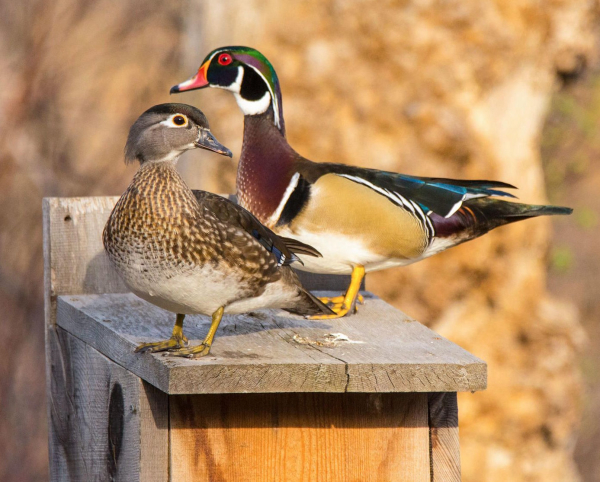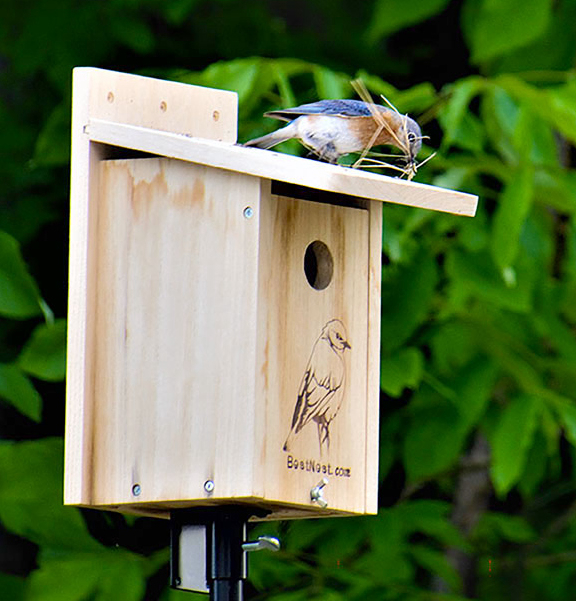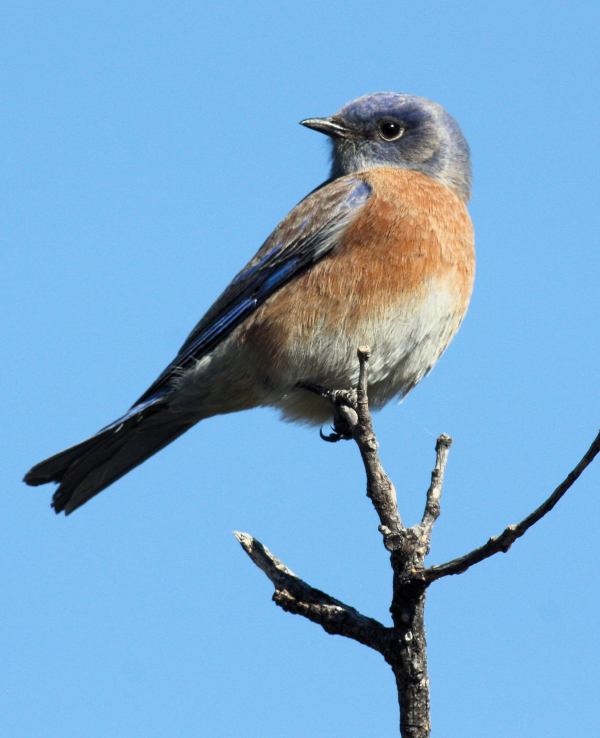Lime Processing Plant Gives Peregrines A New Place to Nest
FRANKFORT, Ky. – A pair of peregrine falcons that took up residence at a lime manufacturing plant on the Ohio River in Pendleton County will have a new place to nest this spring.
“Last year we discovered that the female falcon had laid an egg on one of the ladder platforms on the side of a 150-foot silo,” said Nick Caggiano, operations manager for Carmeuse Natural Chemicals plant in Butler, Ky. “In late December our maintenance crew placed a nest box on top of a support structure for one of the lime belt tubes. We’re delighted to be able to provide a safer place for the birds to nest.”
Although peregrine falcons are no longer a federally listed species, they are still considered rare in Kentucky. They are managed and monitored closely by the Kentucky Department of Fish and Wildlife Resources.
Falcons historically nested on high cliffs. However, in modern times, they’ve been found nesting on high, man-made structures. The nest box at the Carmeuse plant is located in an isolated area about 120 feet off the ground. The nest box and the plant grounds are not accessible to the public.
“Once a pair of falcons shows up at a spot they usually nest there for life,” said Kate Heyden, avian biologist for the Kentucky Department of Fish and Wildlife Resources. “They start courting in February and there are usually eggs in the nest by April. The young leave the nest by late June, when they learn to fly.”
The female falcon is a local bird. “She was hatched in 2009 at the LG&E Bedford Power Plant in Trimble County,” said Heyden. “She has a black and red leg band that reads 25/H. We know she was one of four sisters.”
Heyden noted that it is unusual for a falcon less than two years old to nest. Last year, the bird and its mate successfully raised a chick hatched on the silo’s ladder platform.
Details about the falcon’s mate are unknown at this time. “He’s banded, so when we get a good look at him, we should be able to tell where he’s from,” said Heyden. “In addition to the peregrines raised in Kentucky, we do have some birds here from West Virginia and Ohio.”
Department employees built the new nesting box of marine-grade plywood to give it durability and resistance to the weather. They added a perch to the front then lined the box with pea gravel to simulate cliff rock. Carmeuse employees installed the box.
There are 13 known nesting pairs of peregrine falcons in Kentucky. Twelve of those pairs are nesting on the Ohio River between Louisville and Ashland. The final pair is nesting atop Frankfort’s tallest building, located near the Kentucky River.
Pigeons are a falcon’s favorite prey, but they also take starlings and songbirds. Falcons, which catch their prey in mid-air, can reach speeds of 200 miles an hour during a dive.
Young falcons typically hang around their nest sites for about a month after they learn to fly. During this time, they hone their hunting skills and share in the food their parents catch.
Then they go off on their own, on what might be best described as a “raptor sabbatical.”
“We know from sightings of banded birds that many of our young peregrines move up and down the Ohio River, probably searching for a place to establish a territory,” said Heyden. “But last year, we had one bird hatched in Jefferson County that showed up a month after fledging on a skyscraper in Michigan.”







